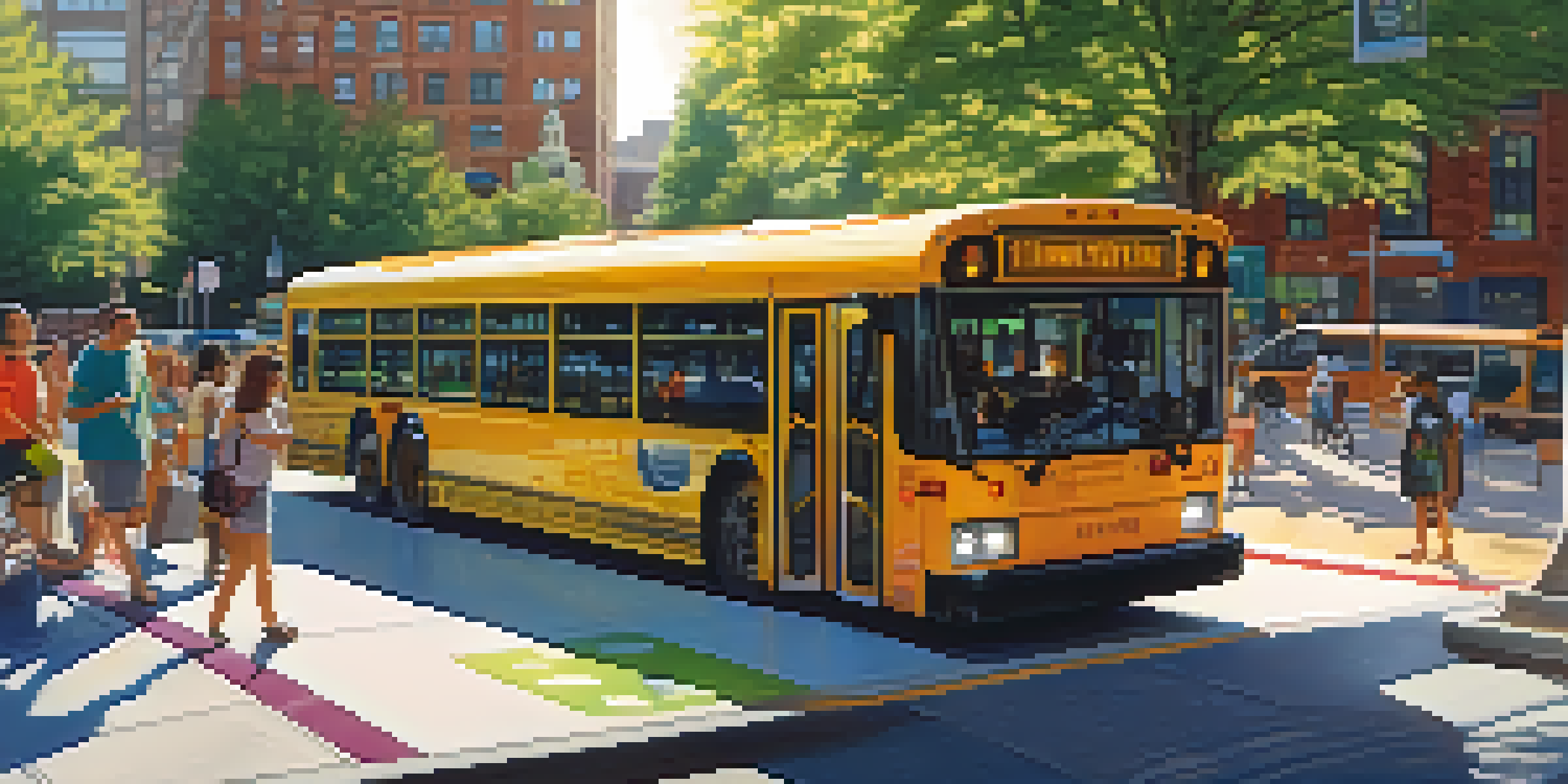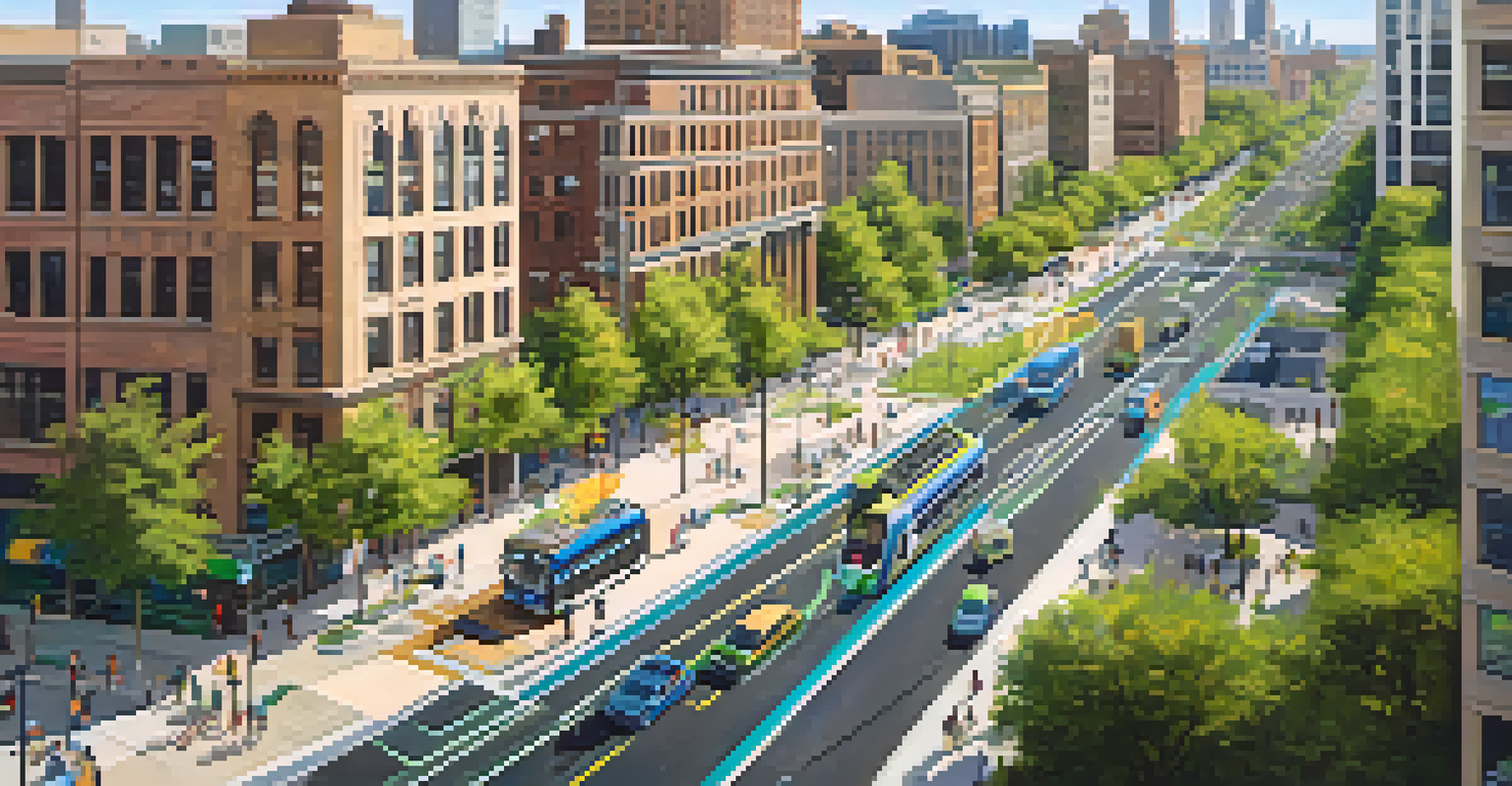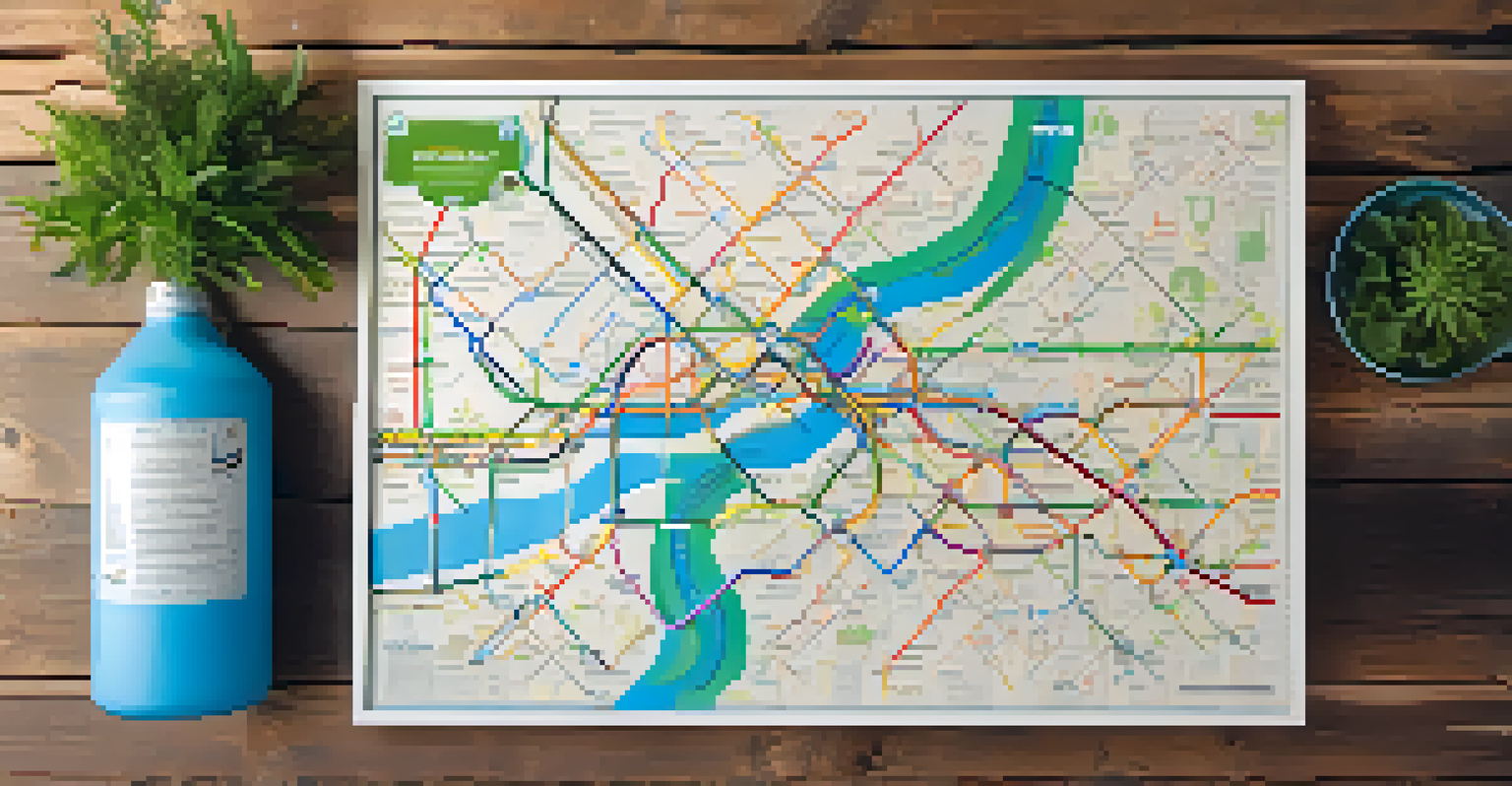Sustainability and Public Transportation in Philadelphia

Understanding Sustainability in Urban Transport
Sustainability in public transportation refers to systems that meet current needs without compromising future generations. In urban settings like Philadelphia, this means reducing carbon footprints while ensuring accessible transport for all. Adopting sustainable practices can significantly improve air quality and public health, which are crucial for city dwellers.
Sustainability is about how we can meet the needs of the present without compromising the ability of future generations to meet their own needs.
By focusing on eco-friendly initiatives, cities can encourage residents to opt for public transit over personal vehicles. This switch can lead to fewer cars on the road, reducing traffic congestion and greenhouse gas emissions. Public transport plays a pivotal role in fostering a more sustainable urban environment.
In Philadelphia, sustainability involves not just the vehicles used, but also the infrastructure supporting them. Investing in bike lanes, pedestrian-friendly streets, and efficient transit routes helps create a holistic approach to sustainable transport.
The Role of SEPTA in Promoting Sustainability
SEPTA, the Southeastern Pennsylvania Transportation Authority, is at the forefront of Philadelphia's sustainable transport initiatives. By providing a diverse range of services, including buses, subways, and trolleys, SEPTA aims to reduce reliance on single-occupancy vehicles. This shift is essential for lowering the overall carbon emissions in the city.

In recent years, SEPTA has made significant strides towards incorporating green technologies. The agency has introduced electric buses and is exploring renewable energy sources for its operations. These efforts not only enhance the sustainability of public transport but also set an example for other urban transit systems.
SEPTA Drives Sustainable Transport
SEPTA's initiatives, including electric buses and improved accessibility, are pivotal in reducing reliance on single-occupancy vehicles in Philadelphia.
Moreover, SEPTA's commitment to improving accessibility and convenience encourages more people to utilize public transportation. When it's easier to get around, residents are more likely to leave their cars at home, contributing to a more sustainable city.
Green Initiatives in Philadelphia's Transit System
Philadelphia is implementing various green initiatives within its public transport system to enhance sustainability. One notable example is the introduction of solar power to transit stations, which helps reduce energy costs and reliance on fossil fuels. These initiatives are not just environmentally friendly; they also promote a sense of community pride.
The greatest threat to our planet is the belief that someone else will save it.
Additionally, the city has been working on increasing the number of bike-sharing programs and improving bike lane accessibility. These programs encourage residents to combine cycling with public transport, making it easier to navigate the city sustainably. Such efforts create a more integrated and eco-friendly transportation network.
These green initiatives not only help the environment but also improve the overall user experience. A cleaner, more efficient transit system is likely to attract more riders, further reinforcing the cycle of sustainability in Philadelphia.
The Impact of Public Transport on Urban Air Quality
Public transportation significantly impacts urban air quality, which is a crucial aspect of sustainability. In Philadelphia, reducing the number of cars on the road can lead to lower levels of harmful emissions, making the air cleaner for everyone. This improvement in air quality directly contributes to better health outcomes for city residents.
Studies have shown that cities with robust public transport systems often enjoy better air quality than those heavily reliant on personal vehicles. This correlation highlights the importance of investing in public transit options that encourage sustainable practices. Cleaner air not only benefits individual health but also enhances the overall quality of life in the city.
Green Initiatives Enhance Transit
Philadelphia's green initiatives, like solar power at transit stations and increased bike-sharing programs, promote community pride and encourage sustainable commuting.
Furthermore, by prioritizing public transportation, Philadelphia can set a benchmark for other cities aiming to improve their air quality. The positive changes seen through increased public transit use can inspire similar initiatives in urban areas across the country.
Challenges Facing Sustainable Public Transportation
While Philadelphia has made strides towards sustainable public transportation, challenges remain. Budget constraints often limit the extent of improvements and expansions to the transit system. Finding the right balance between funding, maintenance, and innovation is crucial for continued success.
Additionally, public perception and habits can hinder progress. Many residents may still prefer driving over using public transit due to convenience or comfort. Overcoming these biases requires education and outreach to highlight the benefits of public transport, not just for individuals but for the community as a whole.
Addressing these challenges is essential for ensuring the long-term success of sustainability efforts in public transportation. Engaging the community and fostering a culture of shared responsibility can help drive change and encourage more people to embrace sustainable options.
Community Engagement and Public Transport
Community engagement is a vital component of promoting sustainable public transportation. In Philadelphia, involving residents in decision-making processes can lead to a more effective transit system. When people feel heard and valued, they are more likely to support initiatives that align with their needs and values.
Public forums, surveys, and community meetings can help gather input from residents about their transportation needs. This feedback can guide improvements and ensure that public transport options are accessible and user-friendly. Engaging the community fosters a sense of ownership and encourages more sustainable transit choices.
Community Engagement is Key
Involving residents in the decision-making process helps create a more effective transit system that aligns with community needs and fosters a culture of sustainability.
Moreover, collaboration between local organizations, businesses, and government can lead to innovative solutions that enhance public transportation. By working together, Philadelphia can create a more sustainable and efficient transit system that meets the needs of its diverse population.
The Future of Sustainability in Philadelphia's Transit System
Looking ahead, the future of sustainability in Philadelphia's public transportation system is promising. With ongoing investments in technology and infrastructure, the city is poised to make significant advancements. The integration of electric vehicles and smart technology can enhance efficiency and user experience.
Furthermore, continued community involvement and public awareness campaigns will be essential in promoting the benefits of sustainable transit. As more residents understand the importance of public transportation, they may be more inclined to use these services regularly. This shift can lead to a more sustainable urban environment.

Ultimately, the ongoing commitment to sustainability in public transit will play a crucial role in shaping Philadelphia's future. By prioritizing these efforts, the city can foster a healthier, cleaner, and more connected community for all its residents.